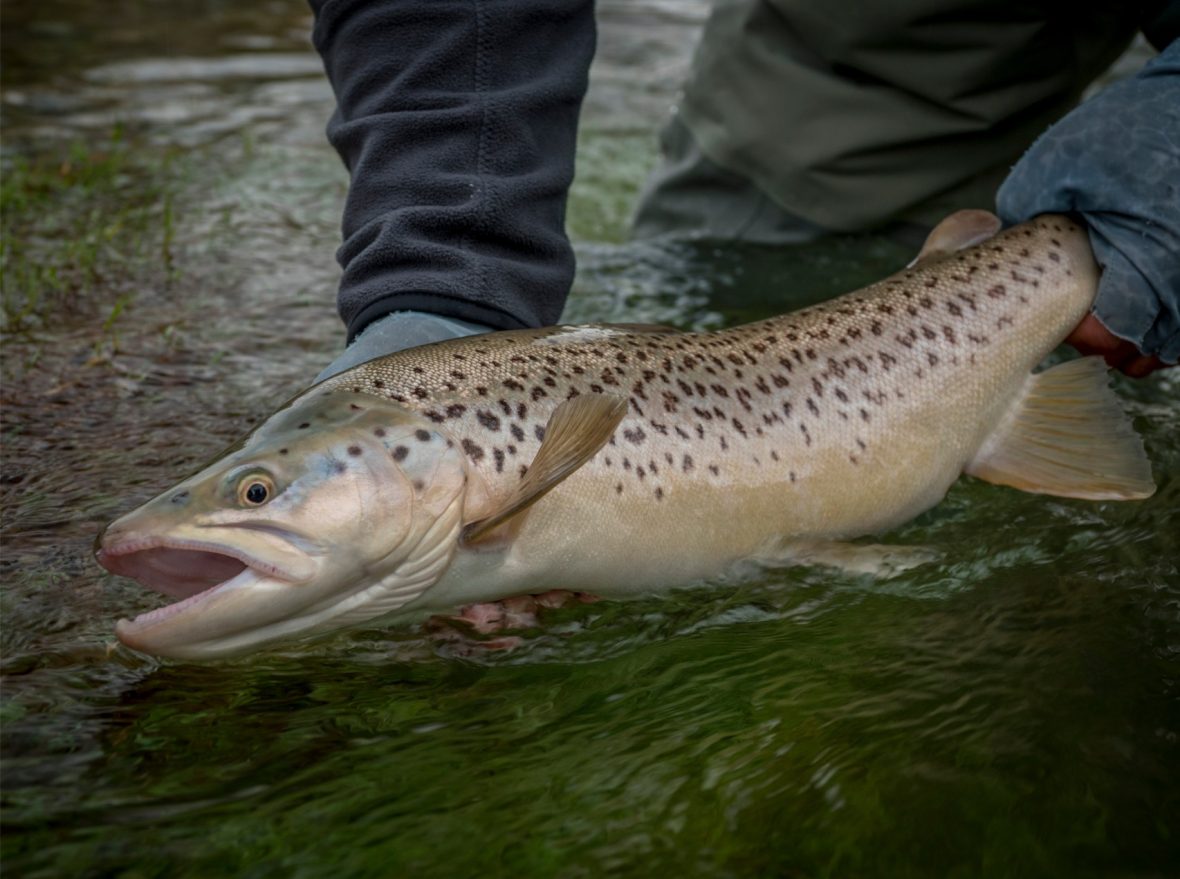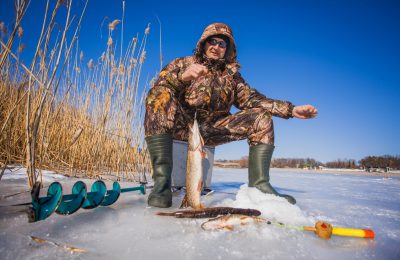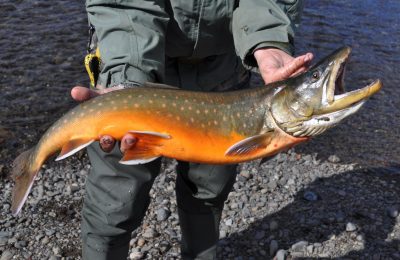Trout are some of the most iconic fish in all of North America. In fact, the United States and Canada have more types of trout than any other place on the planet. So many, in fact, it can get confusing.
From river trout and lake trout to sea running brown trout, there’s a lot to know about this hard fighting, fun to catch, delicious fish.
A Rainbow of Variety
Probably the best-known species of trout fish, rainbow trout are native to the pacific coast, ranging from Alaska to Mexico. However, they have also migrated or been introduced to a much larger area.
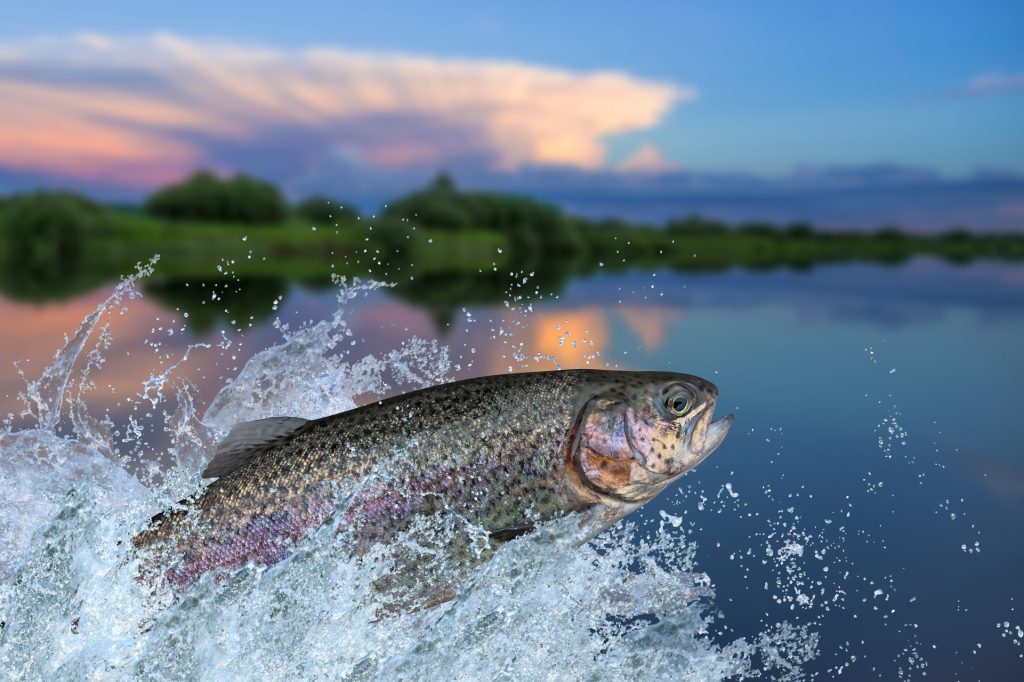
Rainbow Trout
Freshwater rainbow trout can be found in the Great Lakes and all the way south to Georgia. Known for their brightly colored pink stripes, great taste, and ease of catch, they are a favorite worldwide when stocking lakes.
Rainbow trout are larger than most other trout species yet are quick to strike a line and put up a good, but short, fight. This has made them one of the world’s favorite fish for stocking lakes and fisheries.
Throughout the US Midwest lakes stocked with easy to catch rainbow trout are often set up as areas where parents can bring kids to learn about fishing.
This has also made them a favorite food fish, as nearly every child takes pride in being able to eat what they catch.
There are different types of rainbow trout, including the saltwater Steelhead trout, and river-native Colorado Golden trout and Oregon Redband trout. All are similar in size and taste.
Steelhead trout are one of the larger types of trout fish, reaching 3-4 feet in length. Anglers in the Pacific Northwest know to watch for them when they return to freshwater to spawn from January to April.
Cutthroat Trout
While smaller than their colorful relatives, Cutthroat trout have both a better name and a larger subspecies. There are more than 11 different types of Cutthroat trout throughout the western US, making them one of the nation’s most prolific fish species.
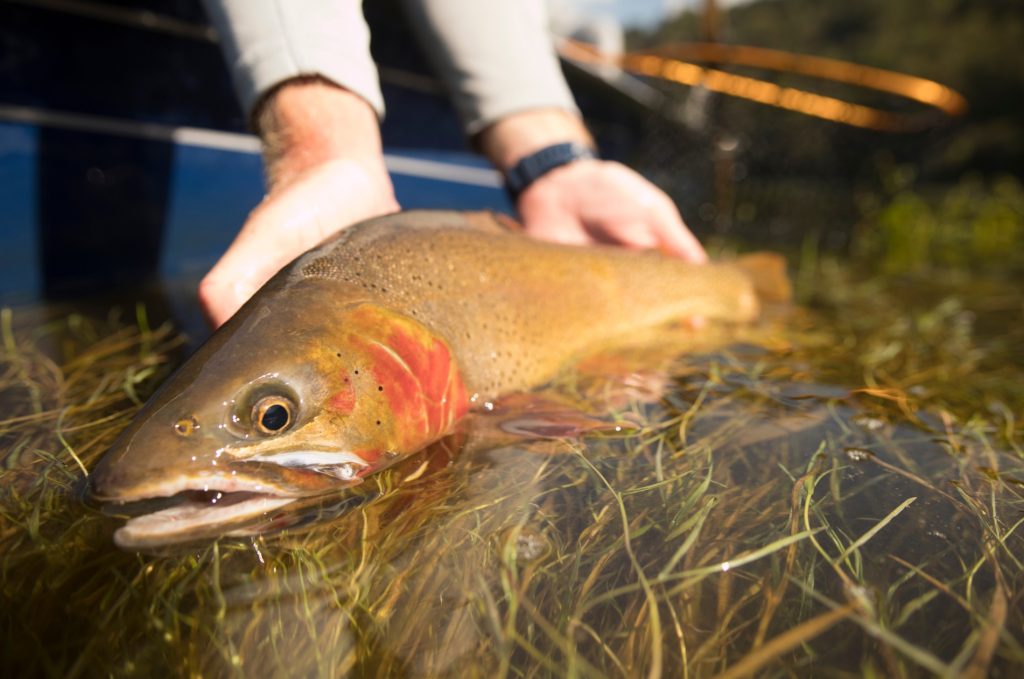
Cutthroat Trout
Some areas have so many different types of Cutthroat trout there are multiple, and specific, species in neighboring rivers and streams.
Named for the bright red area behind their lower jaw, Cutthroats are a favorite of river anglers, especially for fly fishing, as they put up a decent fight and are delicious panfish.
Natives versus Invaders
While all different types of trout can be found in North America, not all of them started there, or are even really trout.
As the name implies, European grayling are a species of British trout that were introduced into American riverways. The same is true of the European brown trout, which came from Germany.
Despite their origins, both species settled into their new home much in the same way as the humans who brought them. Brown trout can be found from the Great Lakes to Alabama, California to Canada, and everywhere in-between.
Not always brown, these golden, brown, or silver beauties all share bright orange spots and a thicker body. That’s because they are more closely related to salmon than trout.
While there can be a confusing variety of trout types, to top it off, all types of trout are not really trout.
Trout versus Char
Several different types of trout are, in fact, char, a cousin to trout that are so similar in appearance they were thought to be one species of fish for centuries.
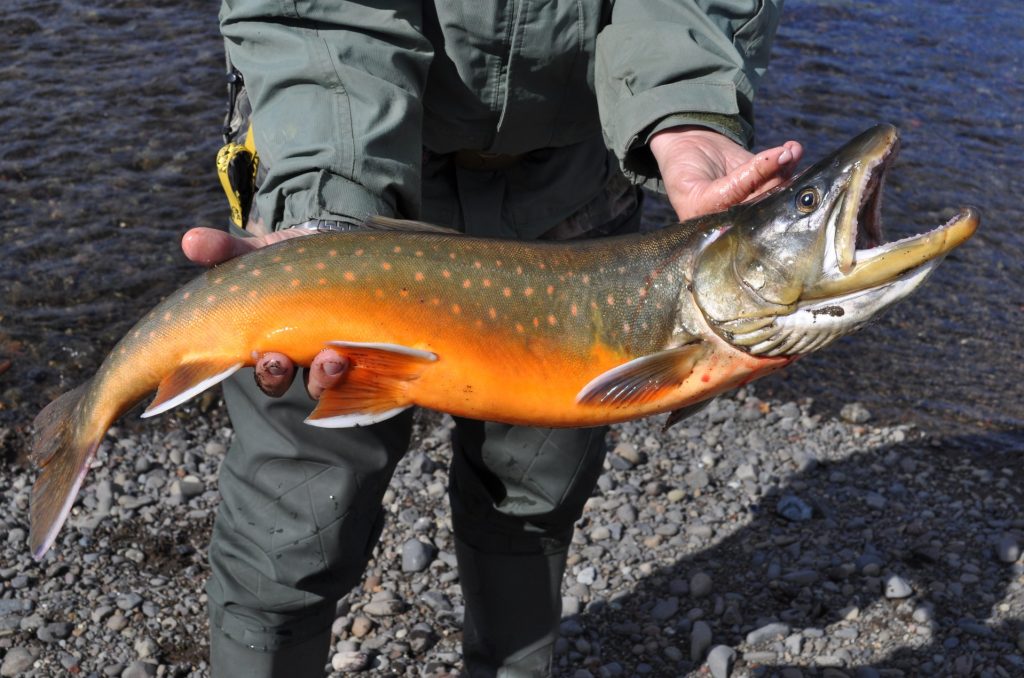
Arctic Char
These fish are closely related to salmon and other cold-water species.
The best known of these mistaken trout are lake trout. This species of char is big. Really big. It is one of the easiest ways to tell that they are not, in fact, trout fish.
Reaching weights up to 80-pounds, these monsters are found throughout the colder, northern lakes, as well as the Rocky Mountains.
While all the same fish, they are also known as grey trout or Togue and are one of the more common types of trout in Utah.
On the smaller end, the petite Dolly Varden trout rarely top hit 10 pounds. Specific to the colder climates, they are one of the more common types of trout in Canada and Alaska.
Another type of char that thrives in the coldest rivers is the brook trout. Small and plentiful, they rarely reach more than 2 pounds, brook trout can be found anywhere in North America that sports super cold rivers or streams.
Trout to Save
Unfortunately, while most trout are hardy survivors found throughout the world, there are some of highly threatened and endangered trout species.
Apache trout, found only in Arizona and New Mexico, are still considered critically endangered, just one step from extinction.
These rare beauties are small, just under a foot in length, with golden yellow bodies and spots on either side of the eye that gives them a cat-eye look.
Gila trout, similar in look to Apache trout but without the eye spots, are only found in the rivers and tributaries of the Gila National Park.
Both species have been overfished and seen much of their habitat taken over by rainbow trout.
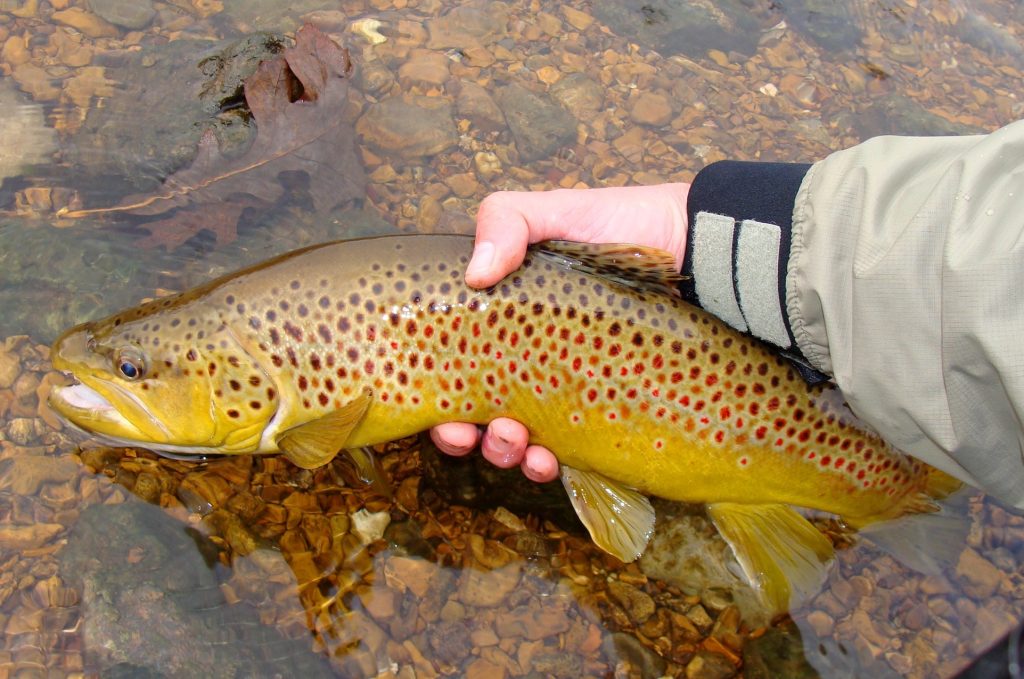
Brown Trout
Truly Different Types of Trout Fish
Splake, are a species of trout specifically created by breeding male brook trout with female lake trout. While they might be found in the wild, it is extremely rare to find them outside a stocked breeding area.
They are bred throughout Ontario as a sport fish for anglers. Splake grow quickly and are prolific feeders of other fish.
Their ravenous appetite has earned them the nickname of “Wendigo Trout,” named after the mythical beast of Algonquian folklore.
While they don’t look anything like traditional trout, tiger trout are another man-made species designed to be a great sport fish for anglers.
They have a dramatic, work-like pattern of spots that earned them their name, and it is worth looking up pictures of types of trout to see them.
These thick-bodied, strong fish put up a good fight and are one of the favorite types of trout in Wisconsin and Michigan. Tiger trout are bred by crossing a male brook trout with a female brown trout.
Check out the best spinning rods for trout and learn more about fishing for lake trout as well as trout fishing in the winter. Here are the top fall flies for fishing rainbow trout.
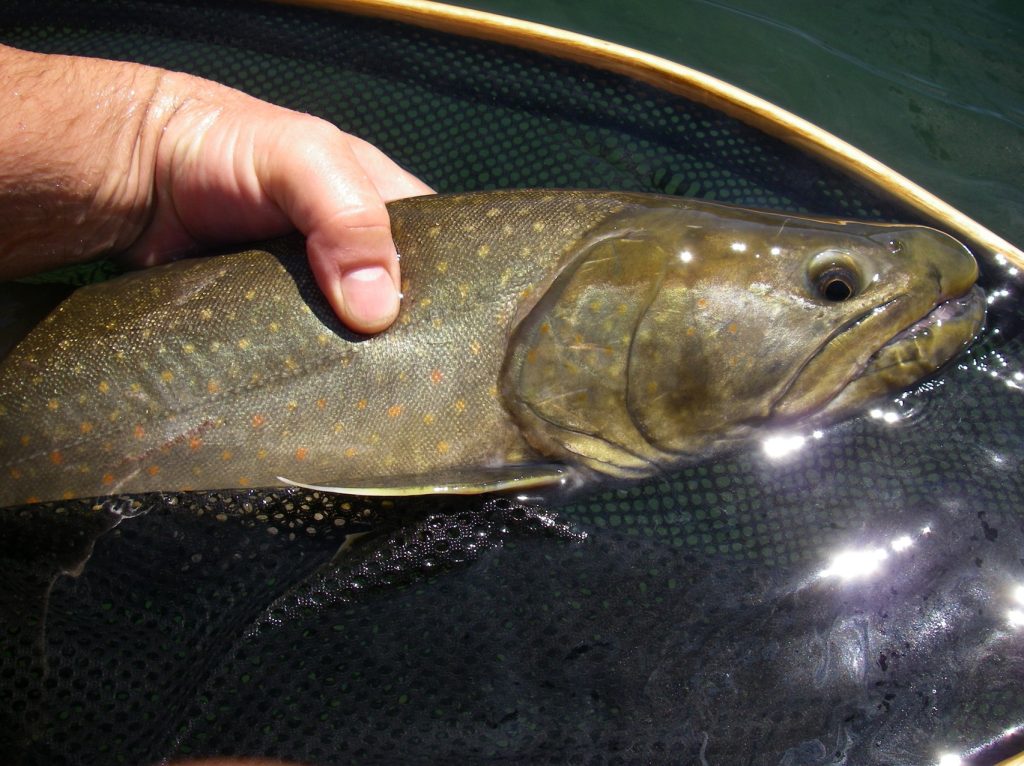
Bull Trout


